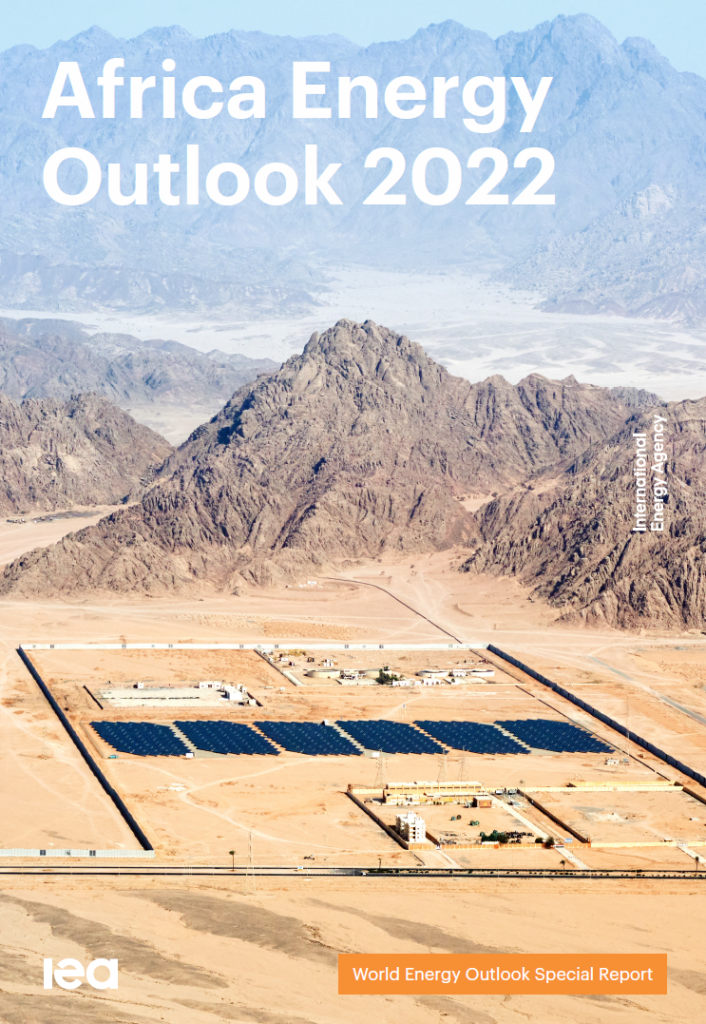- Date
- 24th June 2022
- Categories
By Prof. Matthew Leach (Gamos and University of Surrey)
The IEA launched the 2022 version of their Africa Energy Outlook on 20th June. The report explores the current energy situation across the continent, and looks at the decisions and investments needed to 2030 and beyond for “building a more modern, clean and affordable energy future for all of its people”.
MECS colleagues were involved in the review process for the report, and helped develop a box about the positive links between electric cooking and utility investments, with the example of KPLC’s activities in Kenya.
The report explores the impacts that the pandemic, global energy crisis and the war in Ukraine are having, with increase in commodity prices including key fuels: LPG price in some countries has increased by more than 60%. Through impact on affordability of clean fuels, as well as slowdown in investment and the general challenge of population growth, the number of people without access to modern energy in sub-Saharan Africa is estimated to have increased by 4% in 2021 compared to 2019, wiping out access improvements over the previous 5 years. The IEA though note that outcomes vary strongly between countries.
The AEO is underpinned by modelling, which links to the IEA’s wider World Energy Outlook series. In the modelled pathway “Sustainable Africa Scenario” (SAS), universal access to modern energy services by 2030 is achieved, including for clean cooking, together with full implementation of all African climate pledges, which equate to some 40% reduction on current emissions by 2030. Scale up of energy efficiency and renewables are key elements, with a strong role for solar. Achieving the SAS ambitions is described as ‘a formidable task’. But the report demonstrates the economic, health and social benefits to be had for the continent, including stimulation of millions of decent jobs, and avoiding 300,000 deaths from household air pollution. The SAS is also consistent with the global net-zero pathway.
In terms of cooking:
- To achieve universal access to modern energy, some 130 million people per year need to shift from dirty cooking fuels.
- IEA’s SAS pathway shows that 40% or these transitions are expected to be to improved biomass cookstoves, one third to LPG, 10% via biogas, 6% via ethanol and 10% via electricity.
- The patterns are different between rural and urban area, with electric cooking taken up mainly in urban areas.
- Electric cooking plays an important role as a secondary cooking source, via kettles, rice cookers, microwave and EPCs.
- The report looks in less detail at post-2030, but electric cooking uptake is said to increase as supply reliability improves and incomes rise. BioLPG is also mentioned as a substitute for fossil LPG in this period.
The report has an important focus on the affordability of fuels, and the recent trends in prices. LPG is noted as becoming unaffordable, and this sits alongside ongoing subsidy removal in some countries. While there have been longer running trends for rising fuel prices, it is less clear whether the recent sharp increases will persist. The report notes that if high LPG prices do persist, then electric cooking could be a more important option, especially for urban households.
The report includes an insightful chart on the annualised cost of clean cooking of different types, shown as the share of annual average income.
- Given that the chart covers the whole continent, the cost ranges are wide.
- But ICS, LPG, biogas and electric cooking cost ranges are all shown to be strongly overlapping, and in the lower two thirds of the range for traditional use of charcoal (traditional use of firewood noted as involving non-commercial fuel collection).
- Electric cooking is shown to be the cheapest option in some places, where tariffs are low. However electric cooking has a particular wide cost range, and it can also be the most expensive option.
- The chart includes an additional entry for LPG cooking with April 2022 prices, showing this can push LPG cooking to be the most expensive option, beyond even the cost of traditional charcoal.
- In terms of electric cooking, the chart represents hotplates and induction stoves. The IEA note that “New high efficiency clean cooking devices” are being developed for the African market, but that they are currently too expensive for mass uptake.
Overall this is a timely and valuable exploration of the energy and development challenges and opportunities for Africa, shining a light on the additional uncertainties of current global crises. The importance of modern energy services for clean cooking is prominent.
